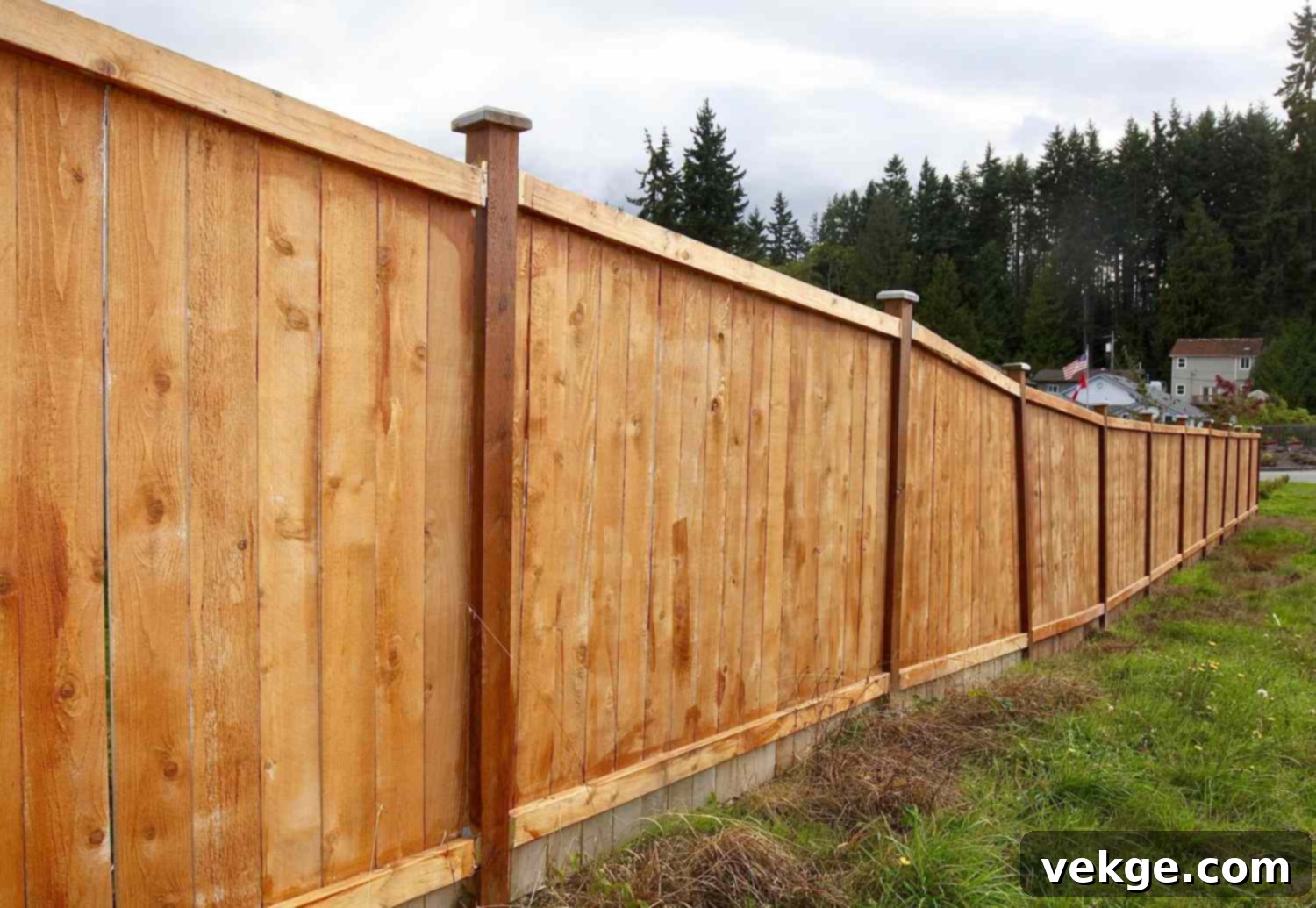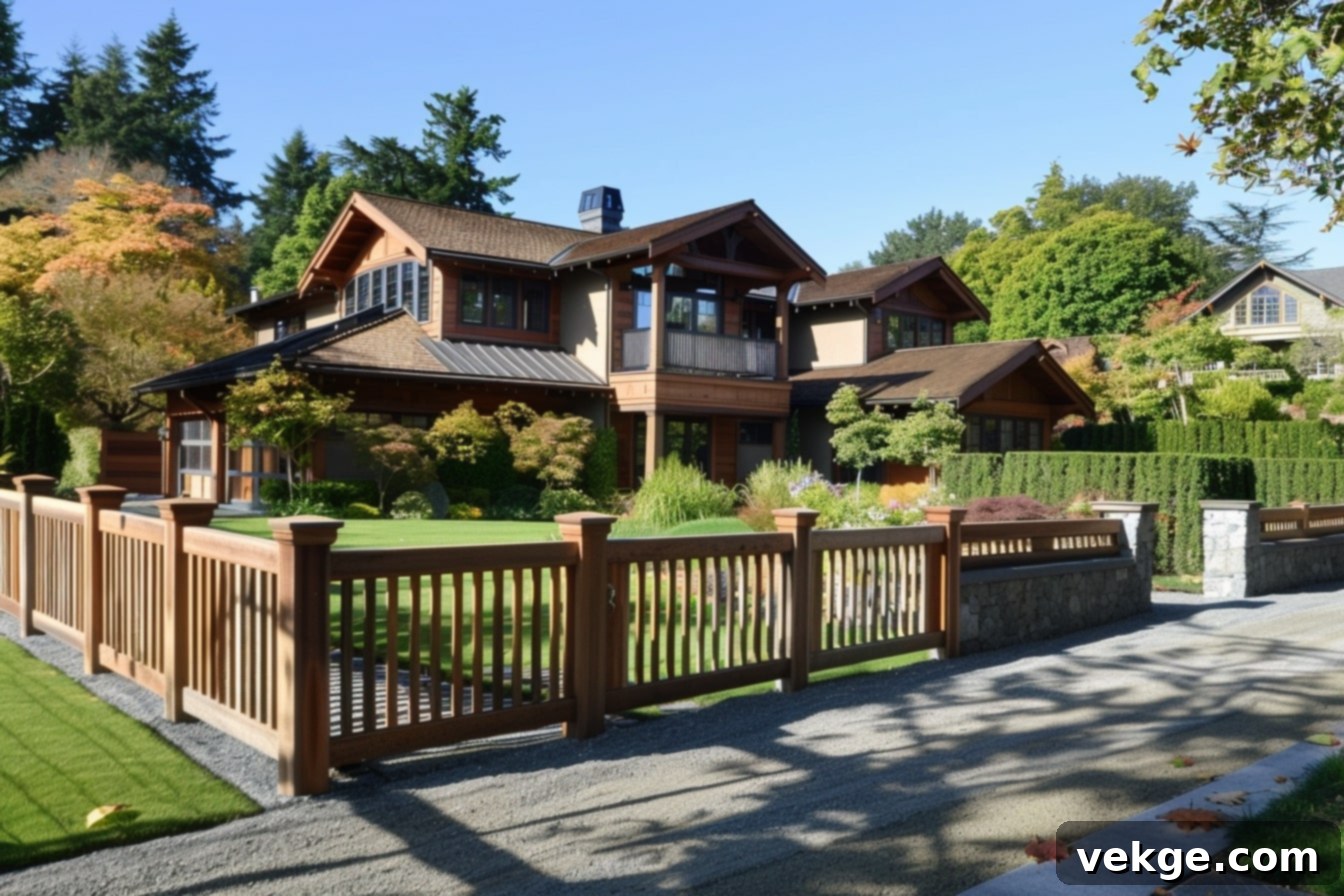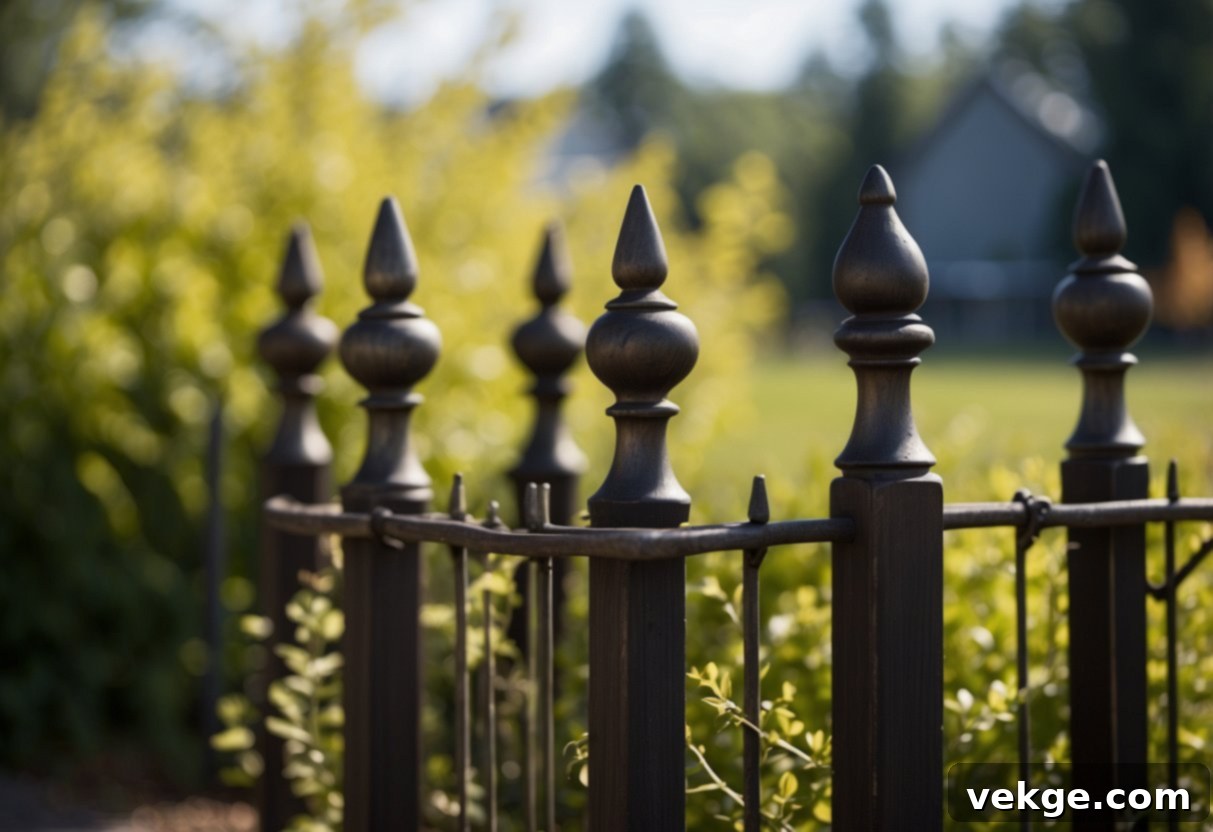The Ultimate Guide to Building a Fence: Planning, Design, Materials, and Installation
Building a fence around your property is more than just a home improvement project; it’s an investment that significantly impacts both the aesthetics and security of your home. A well-planned and constructed fence can enhance privacy, increase curb appeal, delineate property boundaries, and provide a safer environment for children and pets. However, embarking on a fence installation journey requires careful consideration of various factors, from understanding local regulations and property lines to selecting the right materials and design that align with your budget and lifestyle.
One of the initial and most critical considerations is navigating the complexities of local regulations and firmly establishing your property boundaries. Neglecting these aspects can lead to potential legal complications and strained relationships with neighbors, making pre-planning indispensable. Furthermore, the financial commitment is a major factor. While homeowners might typically invest between $1,919 and $4,788 for a standard wooden fence, this figure can fluctuate widely based on the fence’s length, height, chosen wood type, and the complexity of the installation. Therefore, ensuring your fence project remains within your allocated budget while effectively meeting your functional and aesthetic requirements is paramount.
Beyond the legalities and finances, the choice of materials and construction techniques plays a pivotal role in the longevity and maintenance of your fence. The market offers a diverse range of options, including classic wood, low-maintenance composite, durable vinyl, and robust metal, alongside convenient pre-made panels. Each material presents a unique set of benefits, drawbacks, and specific maintenance demands. Moreover, deciding whether to undertake the project as a DIY endeavor or to hire seasoned professionals is a crucial decision that will influence the overall success, cost, and timeline of your fence installation.
Planning and Legal Considerations for Your Fence Project

Before any digging begins, thorough planning and adherence to legal requirements are essential to ensure your fence not only serves its intended purpose but also complies with all local regulations. As highlighted by experts like Admer Construction Group, key considerations involve defining the fence’s purpose, understanding and following zoning laws, accurately confirming property boundaries, and maintaining positive relations with your neighbors throughout the process.
Purpose and Functionality: Defining Your Fence Needs
The first step in any fence project is to clearly define its primary purpose. This fundamental decision will heavily influence every subsequent choice, from the fence’s design and height to the materials used. Are you looking to enhance the privacy of your backyard oasis, creating a secluded space for relaxation? Perhaps your main goal is to increase the security of your property, deterring intruders and safeguarding your loved ones. Or maybe, the fence is primarily intended to establish clear boundaries, keep children and pets safely contained, or even serve as a decorative element to complement your home’s architecture.
For instance, if privacy is your top priority, a taller fence crafted from solid materials like wood, vinyl, or composite panels would be most suitable. These materials offer complete visual obstruction, transforming your outdoor space into a private sanctuary. Conversely, if the aesthetic appeal is paramount or if you’re merely marking a boundary without requiring full seclusion, shorter and more open designs, such as picket fences or decorative aluminum, might be considered. Understanding the intended function ensures that the fence design and materials you select will effectively fulfill your expectations and contribute positively to your property’s value and utility.
Local Zoning Laws, Permits, and HOA Rules
Compliance with local zoning laws, obtaining necessary permits, and adhering to homeowners association (HOA) rules are absolutely crucial to avoid costly fines, mandated demolition, or legal disputes. Zoning regulations typically dictate permissible fence heights, approved materials, and specific setback distances from property lines, streets, and easements. For example, many municipalities limit backyard fences to a height of six feet, while fences situated in front yards are often capped at four feet, as noted by Realtor.com. Some areas might have restrictions on solid fences in front yards, preferring open designs.
Beyond municipal laws, if your property is part of an HOA, you will likely encounter additional guidelines. These can include strict aesthetic restrictions on fence styles, colors, materials, and even specific maintenance responsibilities. Always consult with your local planning department and your HOA management *before* purchasing materials or starting construction. This proactive approach ensures your project is fully compliant, securing any required permits and preventing future conflicts.
Accurate Property Lines and Professional Surveying
Accurately identifying your property lines is arguably one of the most critical steps in fence planning. Building even slightly over a property line can lead to encroachment issues, which might require you to remove or modify your fence at your own expense, potentially damaging neighborly relations and incurring significant legal fees. To prevent such costly mistakes, hiring a professional land surveyor is highly recommended. A surveyor can provide precise measurements and officially mark your property boundaries, offering irrefutable proof of your land’s limits.
While reviewing property deeds and city records can offer some insight, they may not always be precise enough for fence installation. A professional survey eliminates guesswork and provides peace of mind, ensuring your fence is positioned correctly and legally. This investment upfront can save you considerable time, money, and stress in the long run, safeguarding against potential disputes and ensuring the fence’s permanent placement.
Neighborly Etiquette and Communication
Maintaining positive relationships with your neighbors is invaluable, and open communication regarding your fence project is a cornerstone of good neighborly etiquette. Discussing your fence plans with adjacent property owners beforehand can proactively address potential concerns, mitigate objections, and foster mutual understanding. It’s an opportunity to share your vision, explain the benefits, and listen to any feedback they might have.
Common discussion points can include shared costs, especially if the fence will benefit both properties, design preferences, and practical considerations like access during construction. Informing your neighbors about the project timeline, potential noise, and any temporary disruptions demonstrates consideration and respect. This collaborative approach can often lead to amicable agreements, such as splitting the cost of a shared fence or adjusting the design slightly to accommodate a neighbor’s preference, making the entire process smoother and more harmonious for everyone involved. A “good neighbor” fence, where the more aesthetically pleasing side faces outwards, is also a common courtesy to consider.
By diligently understanding these key planning and legal factors, you ensure that your fence project not only meets your personal needs but is also fully compliant with all legal requirements and considerate of your neighborly relationships. This balanced and responsible approach is crucial for achieving a result that is both functional, aesthetically pleasing, and harmonious within the surrounding environment.
Design and Material Selection: Crafting Your Perfect Fence

Once the planning and legal groundwork are complete, the exciting phase of design and material selection begins. Choosing the ideal design and materials for your fence is paramount, as these decisions will significantly impact its longevity, maintenance requirements, and overall contribution to your home’s curb appeal. Factors such as climate adaptability, aesthetic preferences, and the level of maintenance you are willing to commit to should all guide your choices.
Choosing the Right Fence Materials for Durability and Aesthetics
The material you select for your fence is a critical decision that dictates its durability, required maintenance, and overall aesthetic. Each material type offers distinct advantages and disadvantages:
- Wood Fences: A timeless and popular choice, wood provides a natural, classic look that blends seamlessly with many landscapes. Options like cedar, redwood, and pressure-treated pine offer varying levels of natural resistance to rot and insects. However, wood fences typically require regular maintenance, including staining, painting, or sealing every few years, especially in wet climates where moisture damage and warping can be significant concerns.
- Vinyl Fences: Known for their exceptional durability and minimal upkeep, vinyl fences are an excellent choice for homeowners seeking a low-maintenance solution. They resist rot, insects, and fading, and usually only require occasional washing to stay clean. While the initial cost can be higher than wood, their longevity and reduced maintenance costs often make them a cost-effective choice over time.
- Composite Fences: Made from a blend of wood fibers and recycled plastics, composite fencing offers the aesthetic appeal of wood without the intensive maintenance. It’s highly durable, resistant to rot, insects, and warping, and comes in various colors and styles. Like vinyl, composite is a “set-it-and-forget-it” option, requiring only basic cleaning.
- Metal Fences: Materials like aluminum and wrought iron provide robust security and a sophisticated, classic aesthetic. Aluminum is lightweight, rust-resistant, and requires little maintenance, making it ideal for decorative boundaries or pool fences. Wrought iron, while heavier and offering superior strength, requires more maintenance to prevent rust, especially in humid or coastal environments, but offers unparalleled elegance and security.
- Chain Link Fences: A cost-effective and highly practical option for security and containment, chain link fences are durable and require minimal maintenance. They are excellent for pet enclosures or large perimeter fencing where aesthetics are less of a priority.
Your climate, budget, desired aesthetic, and willingness to perform maintenance should all factor into your material choice.
Fence Style and Aesthetics: Complementing Your Home’s Architecture
The style of your fence plays a pivotal role in its visual impact, acting as an extension of your home’s architecture and garden design. Fence styles can range dramatically, catering to various tastes and functional requirements:
- Picket Fences: Quintessentially American, picket fences evoke charm and define boundaries without obscuring views. Ideal for front yards and adding a decorative touch.
- Privacy Fences: Typically 6 to 8 feet tall with solid panels, privacy fences are designed to completely block the view into your yard, offering maximum seclusion. Examples include board-on-board or solid panel designs.
- Semi-Privacy Fences: These fences offer a balance between privacy and openness, often featuring gaps or lattice tops that allow some light and air while still providing a degree of seclusion. Shadowbox fences are a popular semi-privacy option.
- Ranch Rail Fences: Characterized by horizontal rails, these are ideal for defining large property lines, containing livestock, or providing a rustic aesthetic. They offer minimal privacy but are highly functional for certain purposes.
- Decorative Fences: Many fences incorporate ornamental features such as lattice tops, decorative post caps, custom gates, or unique patterns to enhance visual appeal.
The color of your fence can also significantly influence its impact. Natural wood tones can blend seamlessly into a garden, while a crisp white picket fence creates a classic, welcoming look. Darker colors can offer a more modern or dramatic statement. Consider how the fence will look year-round and how it complements your home’s exterior palette and the surrounding landscape.
Durability and Maintenance Concerns: Ensuring Longevity
The long-term durability and maintenance requirements are crucial considerations that affect the total cost of ownership for any fence. While an initial investment might seem high, a durable, low-maintenance fence can save you money and effort over time. For example:
- Wood Fences: While beautiful, wood is susceptible to rot, insect damage (termites, carpenter ants), and weathering. Regular sealing, staining, or painting is essential to protect the wood and prolong its lifespan. Inspections for loose boards, splinters, or signs of decay should be conducted annually, with timely repairs to prevent further deterioration.
- Metal Fences: Aluminum fences are highly durable and rust-resistant, requiring minimal maintenance beyond occasional cleaning. Wrought iron, while robust, is prone to rust and may need periodic scraping, priming, and painting to maintain its integrity and appearance, especially in humid climates.
- Vinyl and Composite Fences: These materials are designed for high durability and extremely low maintenance. They are resistant to moisture, insects, rot, and UV damage, meaning they won’t fade, warp, or crack like wood. Typically, they only require occasional washing with soap and water to remove dirt and mildew.
Regardless of the material chosen, regular inspections and timely repairs are key to extending the lifespan of any fence. Addressing minor issues like loose posts, broken panels, or peeling paint promptly can prevent them from escalating into more significant and costly problems, ensuring your fence remains both functional and attractive for many years to come.
